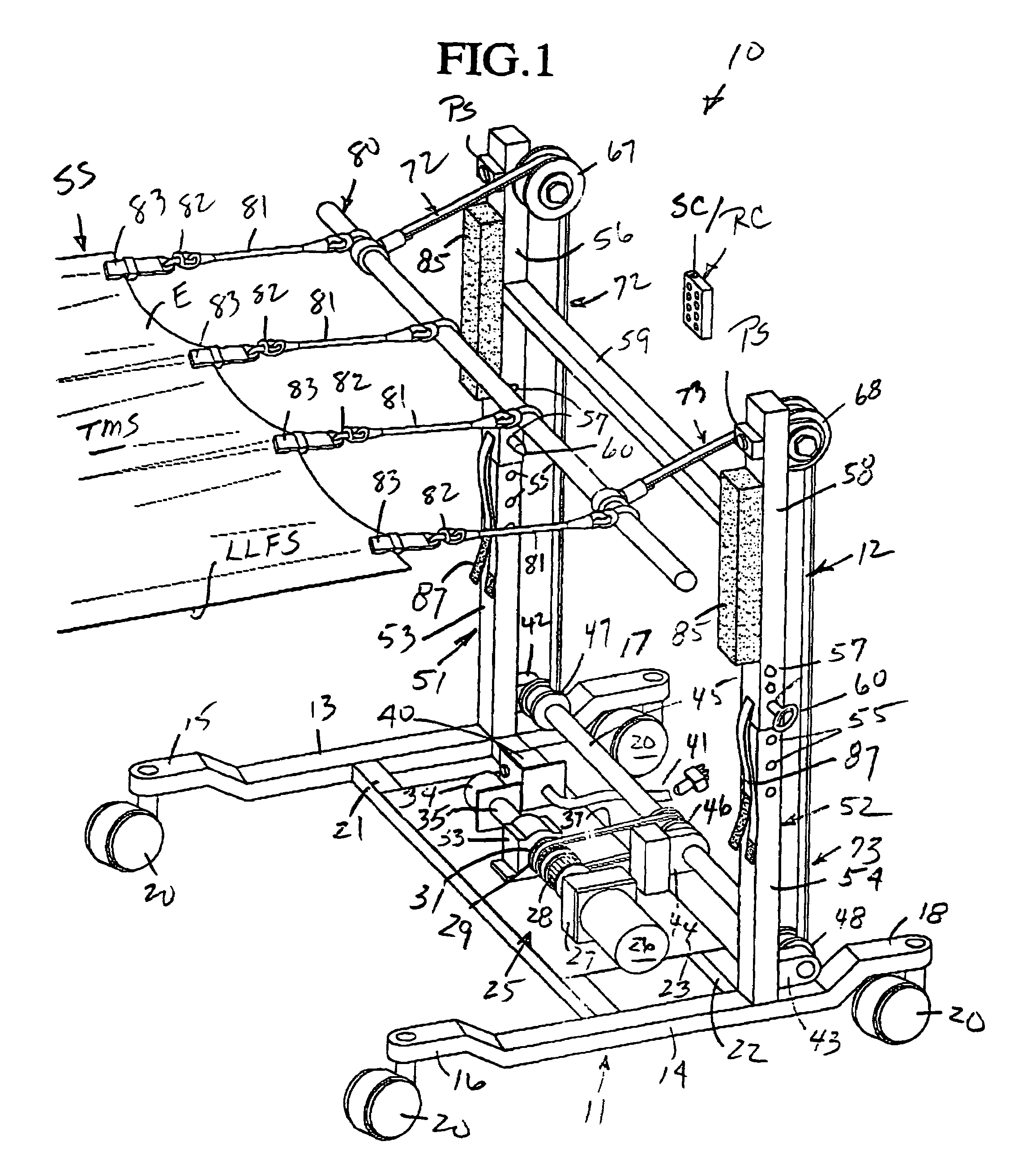Patient transfer device
a technology for transferring devices and patients, applied in the direction of wheelchair/patient conveyancing, transportation and packaging, nursing beds, etc., can solve the problems of inability to move a person with a large amount of effort, etc., and achieve the effect of low friction coefficien
- Summary
- Abstract
- Description
- Claims
- Application Information
AI Technical Summary
Benefits of technology
Problems solved by technology
Method used
Image
Examples
Embodiment Construction
[0012]A novel patient transfer device constructed in accordance with this invention is illustrated in FIG. 1 of the drawings and is generally designated by the reference numeral 10.
[0013]The patient transfer device 10 is adapted to transfer an individual, patient, bed-ridden person P (FIGS. 2 through 4) or the like from a conventional bed B to a gurney G or vice versa in a manner to be described more fully hereinafter.
[0014]The patient transfer device 10 includes a mobile unit defined by platform or a base 11 and an upstanding vertical structure 12.
[0015]The base 11 is substantially elongated and includes a pair of substantially parallel high strength steel longitudinal tubes 13, 14 having upwardly offset forward ends or end portions 15, 16 and similar upwardly offset rear ends or end portions 17, 18, respectively. Lockable / unlockable castors or wheels 20 of a conventional construction are conventionally attached to the forward end portions 15, 16 and the rear end portions 17, 18 of...
PUM
 Login to View More
Login to View More Abstract
Description
Claims
Application Information
 Login to View More
Login to View More - R&D
- Intellectual Property
- Life Sciences
- Materials
- Tech Scout
- Unparalleled Data Quality
- Higher Quality Content
- 60% Fewer Hallucinations
Browse by: Latest US Patents, China's latest patents, Technical Efficacy Thesaurus, Application Domain, Technology Topic, Popular Technical Reports.
© 2025 PatSnap. All rights reserved.Legal|Privacy policy|Modern Slavery Act Transparency Statement|Sitemap|About US| Contact US: help@patsnap.com



